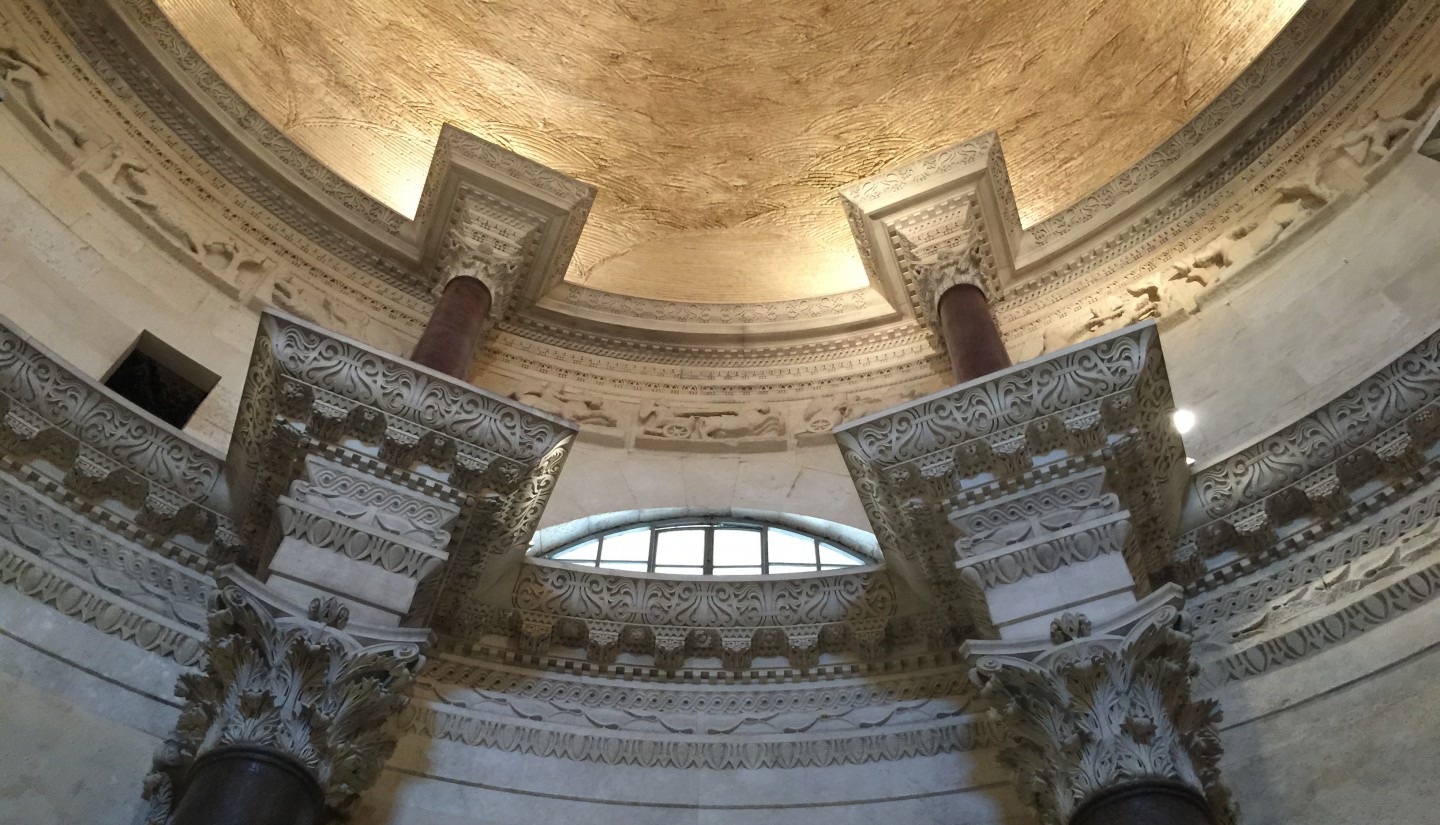
Overall 5 ***** beautifully preserved large theatre with scaena
Display 4 **** informative bilingual display boards
Access 3 *** well laid-out archaeological park – parking difficult
Atmosphere 5 ***** almost unique impression of what a Roman Theatre looked like
Other 4 **** next door to Spain’s magnificent Roman Museum and other sites
The Theatre at Emerita Augusta is without doubt the ‘star attraction’ of the city and is arguably the best preserved Theatre in the Roman Empire.
It is constructed of concrete and granite ashlars. Most of the cavea (seating) tiers are set back into the hillside, as is normal, and it has 13 entrances. Its maximum diameter is 87m and it could seat 6,000 people.
The orchestra is a semi-circle paved with white and blue marble in front of the stage. Around it are 3 tiers of seats separated from the rest by a marble parapet. Three doors allow for the entrance of actors onto the stage.
What really makes the Theatre at Emerita outstanding is the survival of the beautiful scaena (back scene), most of which is still in place including the statues and the columns of the tiered colonnades. The statues are of Ceres, Pluto and Proserpina, with others interpreted as imperial portraits.
It is built according to the rules of Vitruvius and is, as a result, similar to other surviving theatres at Orange in Southern France and Dougga in Tunisia.
Inscriptions show that the Theatre was begun by the remarkable Marcus Agrippa, Augustus’s right-hand man, in 16 BCE when he was campaigning in Iberia. It was modified over the centuries of use: the current scaena was erected under Trajan, and under Constantine (330-40CE) new decorative elements were added.

What was performed in a Roman Theatre? There were comedies and tragedies, most being re-workings of Greek subjects. The Roman comedies that have survived are the work of Plautus and Terentius, who took Greek subjects, removed the role of the chorus and introduced musical accompaniment. Action is set on a street with complications following from overhearing what the stock characters are saying to each other. When you watch Shakespeare’s ‘Two Gentlemen of Verona’, you get a pretty good impression of the kind of plays the citizens of Emerita would have enjoyed here. The most prominent tragedian was the Stoic philosopher Seneca, who also adapted Greek originals for a Latin audience.
For a Colonia, building a Theatre was a very visible statement of its Romanitas or ‘Roman-ness’, as well as a way for the urban elite to show off in the front rows. Theatres were maintained in major settlements throughout the Roman World – clearly, gladiators and games had their place in popular culture, but so did comedies and tragedies!















